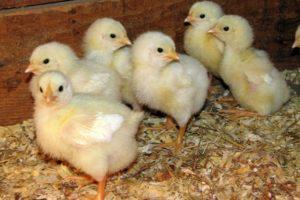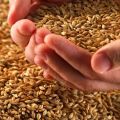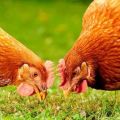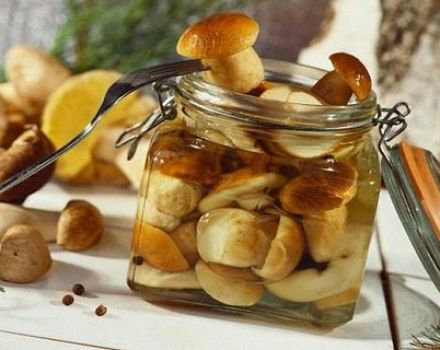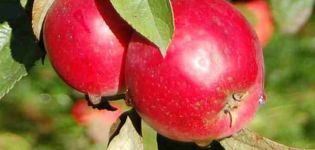How to properly prepare a mash for laying hens, the best recipes and composition
What is a mash, how to prepare a balanced nutritious diet for a home-made laying hen without resorting to compound feed - this worries every breeder. In order to carry and build muscle mass, the bird must receive a complete set of trace elements, vitamins, including calcium. The use of ready-made mixtures is fraught with poisoning and even the death of chickens. We study the experience of professionals and amateurs, prepare the mash ourselves.
What is a mash
This is the name of a special composition that is fed to both adult chickens and chickens so that they grow normally, do not get sick, and develop proportionally. The basis of the mash is crushed grain. The mixture is cooked wet, then the nutrients are added to it.
Of course, a chicken is not a pig, it will not work to feed it with household food waste in the full sense, but you can use some leftovers from the table. So you can vary the composition, along the way, making it cheaper.
Advantages and disadvantages
The advantages of a self-prepared mixture include the following criteria:
- Cheapness, ease of preparation. Good compound feed will cost more.
- Naturalness. The top dressing contains only natural products, no chemicals and preservatives.
- 100% control of proportions, dosages, since everything is done by hand.
These were the advantages, but what about the disadvantages? They are also present. The mash is not intended for long-term storage, it should be used as soon as possible. Feed the bird with a stale mixture, prepare for negative manifestations - diseases, death of chickens.
Sometimes it is economically more profitable to use cheap compound feed, and it takes much less time.
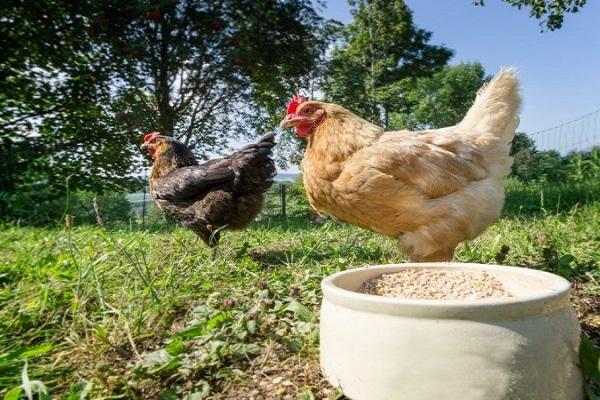
Which is better: mixed feed or mash
The question is far from unambiguous, it does not have a clearly defined answer. The compound feed is cheap, available, stored for a long time, does not require additional preparation before use. But there is a risk of poisoning, since it is not known what the composition was combined from, what was added there, how it will affect the chickens.
The mash is simple in fact, consists of natural ingredients, extremely nutritious. But - it takes a lot of time for preparation, does not allow storage in finished form. Many poultry farmers use both alternatives in a sensible combination.
But most still tend to mash, as the optimal combination of trace elements and nutrients.
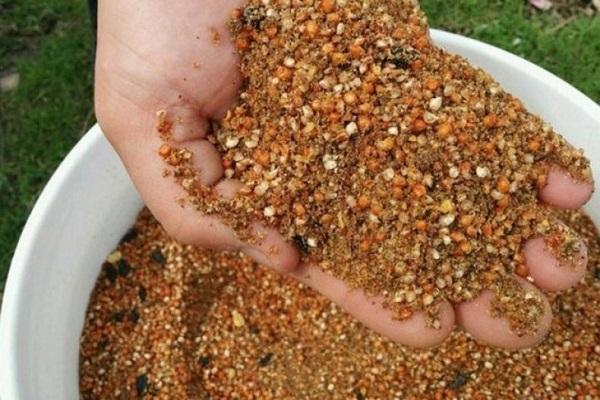
How to cook it yourself?
At home, top dressing is prepared from grain, wheat, barley, corn are suitable. Fine gravel is added to stimulate digestion.
It is permissible to strengthen the mash with components to increase egg production, and other additives.
The approximate composition is given below:
- cereals;
- boiled potatoes;
- meal;
- vegetables;
- bone flour;
- salt;
- a piece of chalk;
- greenery;
- yeast.
If necessary, add eggshells, broth (meat or fish), milk. An excellent, balanced composition is obtained if you use several varieties of grain at the same time.
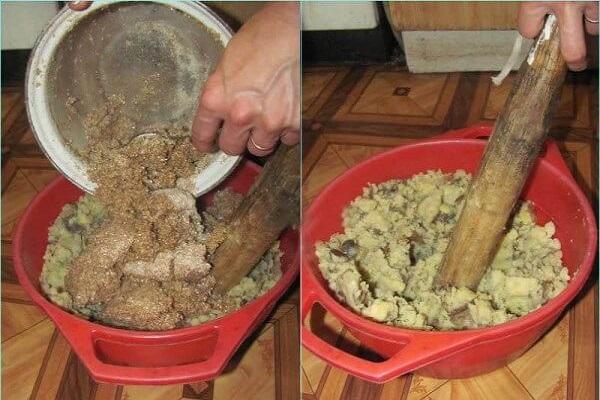
For adult layers
Laying hens traditionally produce fewer eggs in winter than in other seasons. In order to prevent a complete drop in indicators, a mash is prepared for the bird.
For this you will need (the components are given in grams):
- barley, wheat grains - 30 each;
- corn - 20;
- any greenery - 20;
- wheat bran - 5;
- meal - 10;
- crushed shells - 3;
- chalk - 2;
- salt - 0.5.
The product is mixed with water, meat broth - your choice. The approximate proportions of the mash are calculated using the formula 272 kilocalories per 100 grams of dry feed mixture. Give the ready-made mixture twice or three times a day.
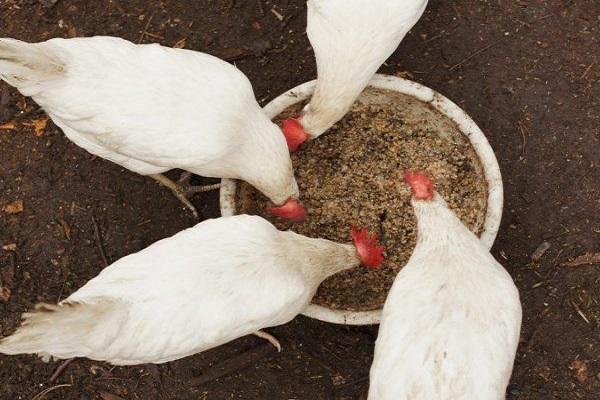
For chickens
The recipe for chicken formula is different from that for adult chicken. They are fed more often, and the food itself should be more dosed, aimed at uniform growth.
The most suitable basis for kneading is whey or water. Additives (chalk, vegetables) give chickens 5 days after hatching from the shell. At 7 - finely chopped green shoots, crushed millet, fish oil are introduced into the diet. It is advisable to put sand and small gravel in a separate feeder.

Newborn chickens are fed according to a special method: a hard-boiled egg (mashed), cottage cheese, greens mixed into a homogeneous mass in milk. From the age of 10 days of age, the grown chicks can be fed with a mash according to the following composition:
- barley, corn grain - 13 grams;
- ground bone flour - 1 gram;
- meal - 0.5 grams;
- boiled potatoes - 4 grams;
- curd mass - 2 grams;
- greens - 7 grams;
- minerals - 1 gram;
- milk - 15 milliliters.
The components are indicated taking into account the approximate diet, they can be varied at your discretion. After such feeding, the chickens grow healthy and gain weight quickly.

